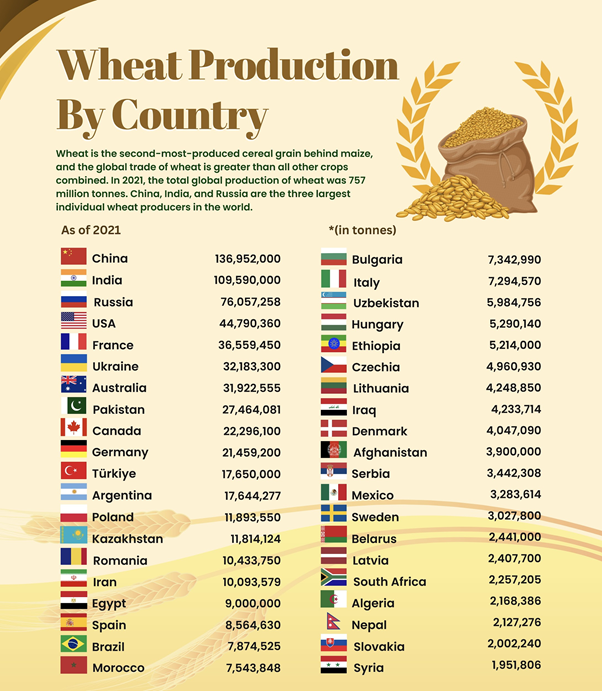Effects of weather events on the wheat crop?
Context: The unusual rise in mercury in February this year, followed by an untimely spell of widespread rain accompanied by gusty winds and hails during the month of March in parts of the country’s key grain-producing States — Punjab, Haryana, Madhya Pradesh, Uttar Pradesh, Rajasthan, Bihar and Gujarat — have left wheat-growing farmers worried as they anticipate a drop in yield, output (production) and quality.
How will the rains affect the wheat crop?
- According to the India Meteorological Department (IMD), fairly widespread rains along with stormy winds between 40-50 kilometres per hour lashed several parts of the major wheat-growing States in the country during March, under the influence of consecutive Western disturbances.
- Rain spells escorted by winds are not considered to be a good sign for the crop’s health if they are close to the ripening and harvesting stage, especially if there are instances of water logging in the fields.
- There have been instances of crop flattening in fields, besides water logging, which could be detrimental for the ready-to-harvest wheat crop.
- Wheat, a key rabi (winter) crop is sown between late October till December; it nears the ripening stage in the month of mid-March, and harvesting of the early sown varieties usually commences by the end of March itself.
How much output would be affected?
- Agriwatch, an agri-commodity research firm, in its latest report has stated that owing to the recent untimely rains, the country’s wheat production in the agriculture year 2022-23 is likely to be 102.9 MT which is less than the Union government’s estimate of 112 MT.
- The Union, however, is optimistic that wheat production would be close to 112 MT on account of an increased acreage (area) of wheat and better yield this season, despite a slight production loss due to recent adverse weather conditions.
- As per the government, the average wheat acreage this year (2022-23) has been 14,86,240 hectares more in comparison to the last five years (2017-2021) which stood at 30,382,010 hectares.
What are agri-experts saying?
- A sizable section of farmers assert that the inclement weather has adversely damaged the standing wheat crop.
- Experts believe “It’s not just the untimely rains in March, but the unusually higher temperature in February this year that has also been detrimental for the wheat.
- Now, after the rains and winds, wherever the crop has flattened, it will be difficult to recover it, eventually hurting the crop’s yield.
- Moreover, if the country’s wheat production drops below the government estimate it could lead to a hike in prices of wheat and wheat-based products in the domestic market.
Practice Question
|




